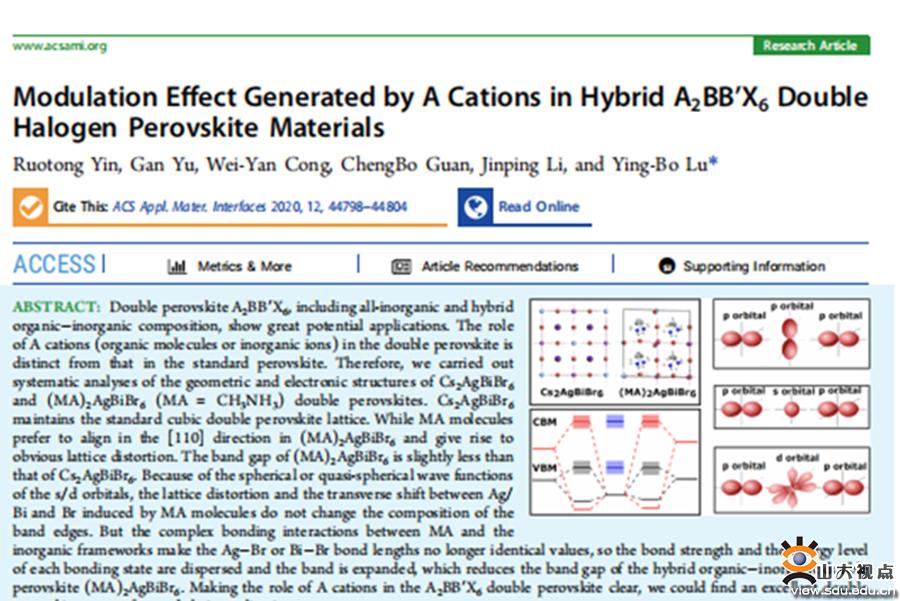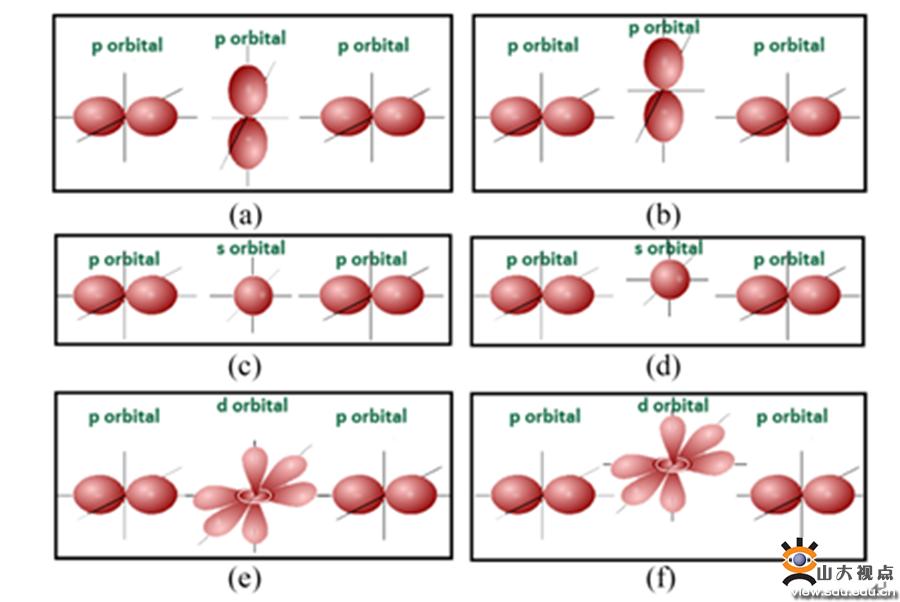Recently, the article "Modulation Effect Generated by A Cations in Hybrid A2BB’X6Double Halogen Perovskite Materials" was published in the journal of "ACS Appl. Mater. Interfaces" (impact factor 8.758,Q1 journal from SCI).The first author of the article is Yin Ruotong, a senior student of the School of Space Science and Physics, and the corresponding author is LU Yingbo, a professor from this school.

With the increasingly serious energy shortage and environmental problems, the use of clean and efficient solar energy has become a research hotspot of academia and industry. Among the optoelectronic materials widely studied at present, the double perovskite materials are non-toxic and of high stability, so they have gradually emerged in the photovoltaic field such as solar cells. In this paper, Yin etc. studied two kinds of double perovskite materials, i.e., pure inorganic Cs2AgBiBr6and hybrid organic-inorganic (MA)2AgBiBr6(MA=CH3NH3), and compared their geometric and electronic structures through first-principles calculation. The Cs2AgBiBr6maintains a standard cubic lattice. However, for (MA)2AgBiBr6, due to the unbalanced charge distribution and non-equivalent chemical activity of MA molecule, there is complex bonding interaction between MA molecule and the inorganic framework, which results in obvious lattice distortion in (MA)2AgBiBr6. Due to the spherical or quasi-spherical electronic wave function of the s or d orbital, the lattice distortion and the transverse displacement between Ag/Bi and Br caused by MA molecule do not change the composition of the band edge. However, because of the complex bonding interactions between MA molecule and the inorganic framework, the bond lengths of Ag−Br or Bi−Br no longer have identical values, but distribute dispersedly within a range, which makes the bond strength of each metal-anion bond different. Therefore, the energy levels of each bonding state are dispersed and the band is expanded, which reduces the forbidden gap of (MA)2AgBiBr6double perovskite. This investigations will play a positive role in promoting the application in the field of double perovskite solar cells.

The School of Space Science and Physics pays high attention to promoting the innovative ability of the undergraduates. Teachers are encouraged to guide students to engage in scientific and technological innovation activities, while students are organized to participate in various scientific and technological innovation competitions on national and provincial levels. Benefited by the favorable policies of the university to support undergraduates’ research, Yin Ruotong has been following hertutorto work in the laboratory for scientific and technological innovation and scientific research since her first year at the School of Space Science and Physics. Being diligent in thinking and hardworking in research, she has made outstanding scientific achievements and won awards in various provincial and ministerial competitions.
The research work of this article was supported by the National Natural Science Foundation of China, the Natural Science Foundation of Shandong Province, Key Laboratory of Weihai City and the Supercomputing Center of Shandong University, Weihai.
Link of the article:https://pubs.acs.org/doi/abs/10.1021/acsami.0c13374